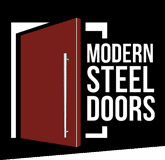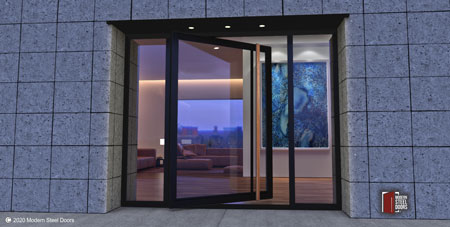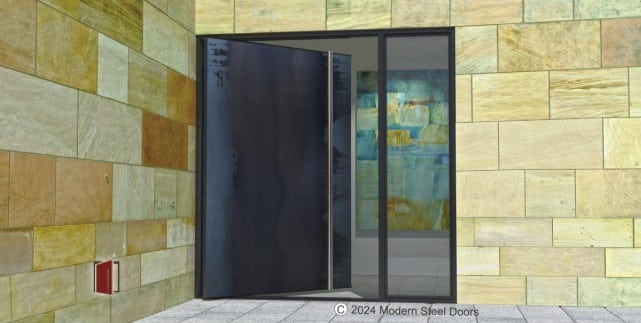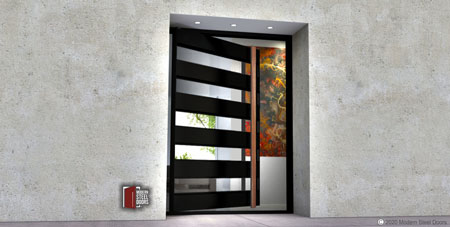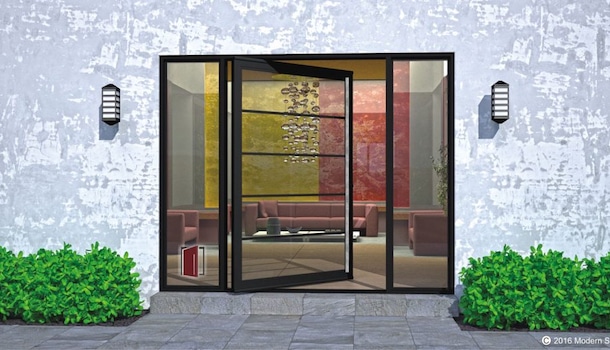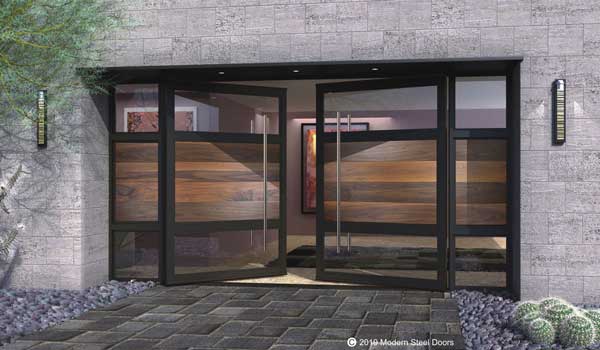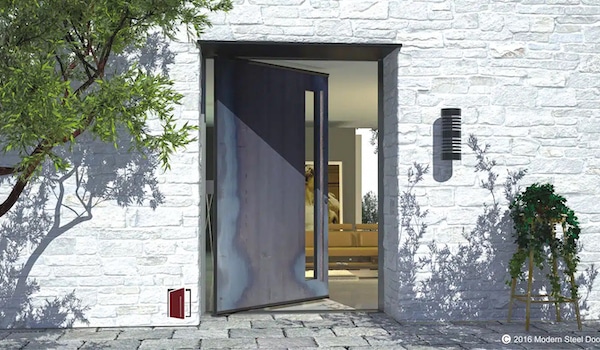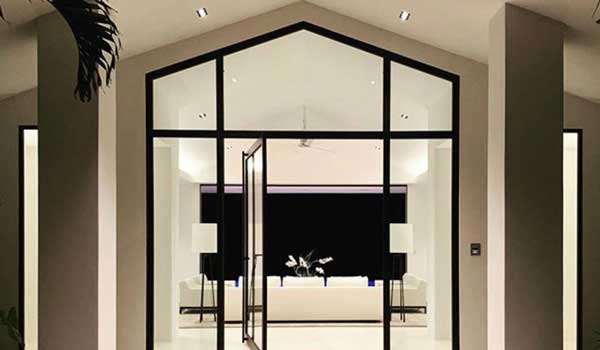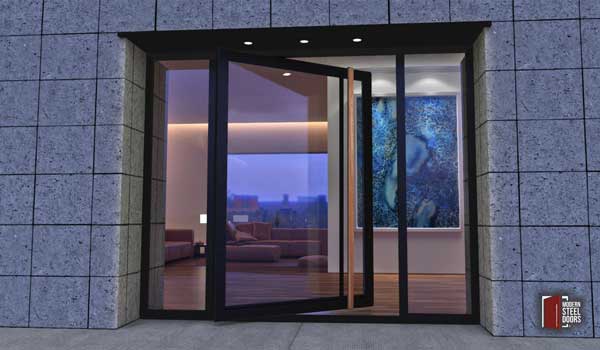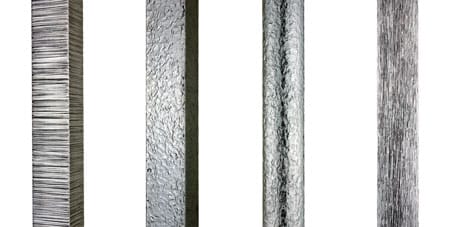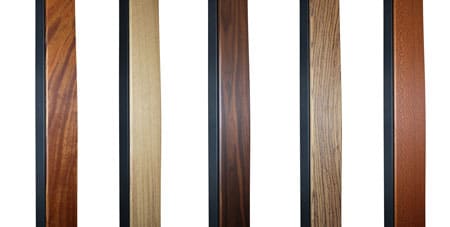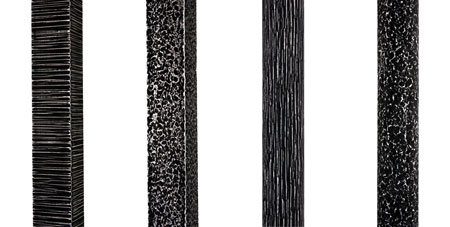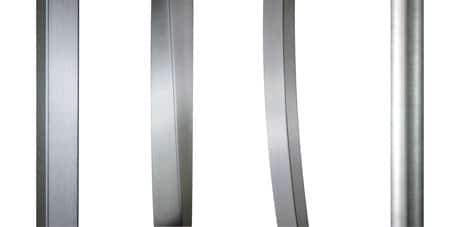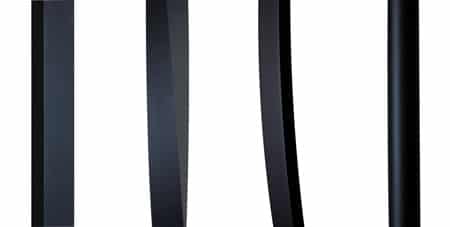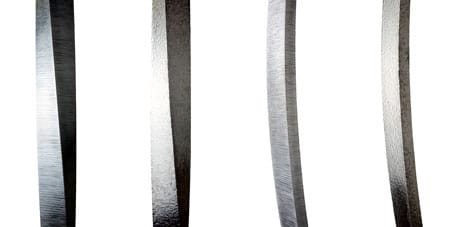What is a Pivot Door?
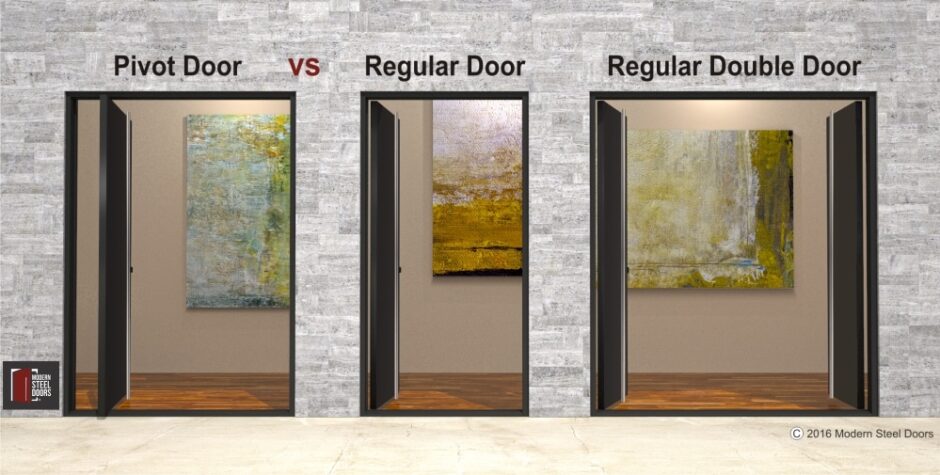
A pivot door is a large door that rotates vertically with aligned hinges fixated on the top and bottom of a door. With a pivot door system, the hinges stand away from the edge of the door. This hinge placement allows the weight of the door to be transferred vertically, as opposed to hanging off the side frame horizontally. Pivot door systems are often used in modern designs and luxurious homes.
Hinged Doors vs. Pivot Doors
Hinged doors differ from pivot doors in their hinge placement. While regular doors have their hinges located on one side of the door, pivot door hinges are affixed to the top and bottom of the door. Furthermore, pivot doors tend to be more expensive than hinged doors. While there is a time and place for both, pivot doors tend to have greater possibilities.

Size
The unique hinge placement permits pivot doors to be far larger than regular doors. Pivot doors are more structurally sound and capable than regular hinged doors. The vertical transference of weight is key. This vertical force diminishes the sagging phenomenon seen in regular hinges that struggle to handle the size and weight of larger doors. Homeowners looking to have a large and impressive front door on their homes often opt for pivot doors.
Movement
Pivot doors rotate upon a fixed axis located on the upper and lower jambs of a door. These hinges are offset from the edge of the door, dividing the entryway into two distinct spaces when in the open position. These two spaces can be described as the active and inactive spaces.
The active space is where users walk through the doorway. The inactive space is merely an aesthetic space that adds visibility and is noticeable when in the open door position. The dual movement between these two spaces creates balance and reflects the golden mean.
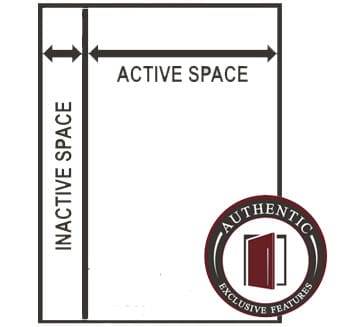
"*" indicates required fields
